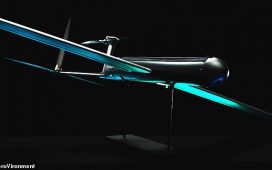Approach
When a memristor is formed and programmed the cell exhibits a varying I–V characteristic24. Similarly, variability can be observed cycle-to-cycle as the memristor is set and reset14,25. The disparity in the cells’ characteristics gives each cell a different behaviour, which can make it differentiable from other cells.
Depending on the memristor technology used, these characteristics may be different or varying in reliability over time and environmental conditions. Because of this, a methodology was developed to identify and visualise variation in I–V behaviour between different cells, with the aim to uniquely identify memories based on their unique combination of characteristics. Such a methodology will be generally applicable to any resistive memory with a variable, non-linear I–V behaviour and offers an additional source of entropy as compared to simpler methodologies involving the absolute resistances of the high resistance or low resistance states. Applications could also extend to device development, where a baseline model could be used to identify good or poor memristor behaviours with further applications in production testing.
It is worth noting that the presented methodology is appropriate for use both with standalone devices/arrays that can be evaluated with commercially available instrumentation tools26,27, as demonstrated in this paper, as well as with memristor/ReRAM technologies monolithically integrated onto CMOS. The latter would require both the physical integration of technologies as well as the integration of design kits and models28,29 and is a potential avenue for future work. In such an integrated design, trade-offs must be made between convenience and the potential for an attacker to include additional hidden logic with reduced audibility.
Rationale
To identify only intrinsic device variation, any external differences introduced to the memrisor should be minimised. To achieve this, the same forming and programming methodology must be applied to all cells in an array equally. Although not directly tested, it may be possible to reset any introduced biases by cycling the memristor between its high resistance and low resistance states. Once the memristors have all been programmed to the same state, their sub-threshold I–Vs may be collected without affecting their state. Some previous work, partly dependent on the voltage-dependent resistance behaviour, has been proposed as a PUF20. This work depends indirectly on the non-linearity of cell conductances in a 3-dimensional crossbar array and requires a large, highly reliable, array with a specific on-chip hardware for comparing the responses rows of the array to a specific stimulus. In comparison, the proposed method is generally applicable to identify standalone memristors in smaller arrays. The advantage of the proposed approach is a high degree of transparency as the majority of the processing can be performed in a trusted off-chip environment, away from any supply chain risks. Additionally, since a simple design requires only individual memristors to be on-chip with characterisation performed off-chip, the power characteristic is highly deterministic (limited to the \(I^2 R\) required to read the resistance) which can enable a high degree of trust against hidden on-chip hardware. To this end, a methodology was developed using the ArC One memristor characterisation platform to individually address memristor cells, form them and characterise their I–V responses and variation.
Characterisation
Data collection
The data collection methodology is designed to approximate a hardware design, similar to that shown in Fig. 1. In this design a controller is capable of testing the memristor at arbitrary voltages via a DAC. The resulting current is then read back using an ADC. The amount of this design that may be incorporated on-chip can be varied to design requirements. In the extreme, the whole system could be implemented on-chip. This, however, negates many of the advantages in trust and auditability offered by completing identification using trusted known hardware. In addition, the on-chip area requirements are greatly increased. At the other extreme, only the memristors need to be be implemented on-chip. For such a design a large number of terminals will be required to individually access each memristor on the chip. By doing so, the maximum level of auditability is offered and minimal area is required. A realistic design may strike a compromise where only memristors and multiplexing logic are implemented on-chip, and a trusted off-chip device completes the data collection. Such a design would require minimal trust of the chip, whilst needing only a small amount of on-chip area by reducing the number of pads necessary for interfacing.
The methodology was employed on 32-cell standalone memristor arrays. All cells in the array are treated equally from pristine (never previously used) to avoid incorporating any bias in the results. The cells were initially formed using the ArC One “FormFinder” tool, using a minimum voltage of 4V and a maximum of 9V with a 0.1V step, minimum pulse width of \(100 \, \upmu s\) and maximum \(1000 \, \upmu s\) with a \(100 \%\) step, and \(1 \, M \Omega\) resistance threshold. This gradually increases the voltage until a sub-\(1 \, M \Omega\) resistance is achieved on read, indicating the device has successfully formed a conductive filament in the memristive active layer. After this, cells are repeatedly read with sub-threshold voltage ramps over \(\pm 0.5 \, V\) with a \(0.01 \, V\) step and 8ms pulse width. Each read cycle over the employed 32 cells takes approximately a minute, enabling a periodic measurement once per minute over a longer time period for averaging. The experimental setup for this process is shown in the top row of Fig. 2.
Characterisation experimental setup. (a) An array of standalone memristors (formed at the cross sections of the connecting wires) is probed with a probe card and individually addressed for characterisation by the (b) ArC One memristor characterisation platform. This data is then extracted as (c) I–V curves and then analysed in software to produce (d) a 2D matrix which can be plotted to visualise the magnitude of the ratio of resistances to positive compared to negative voltages.
Data are gathered for an array over longer runs with an I–V characteristic measured for each cell over a period for short-term analysis initially (for example, 18 h) and at later intervals (days) for long-term analysis. The initial long run enables short-term changes after forming to be observed, whilst the latter runs allow the cells’ states to converge to help test the long-term reliability of the response.
Data analysis
Analysis of the data was based on comparing the ratio of the cells’ resistance to positive polaity voltages to the resistance to negative voltages. These ratios can be visualised as a 2D heat map after data collection, as shown in the bottom row of Fig. 2. For the purposes of producing a visualisation, the ratios were corrected according to the following formula:
$$\begin{aligned} Ratio_{vis} = {\left\{ \begin{array}{ll} + \left( \frac{R_+}{R_-} – 1\right) &{} R_+> R_- \\ – \left( \frac{R_-}{R_+} – 1\right) &{} R_- > R_+ \\ 0 &{} R_+ = R_- \end{array}\right. } \end{aligned}$$
(1)
where \(R_-\) is the resistance to the negative voltage, and \(R_+\) is the resistance to the positive voltage. Correcting the ratio in this way enables a linearly scaled heat map to clearly demonstrate the polarity and magnitude of the positive voltage resistance as compared to the negative voltage resistance.
By plotting these 2D heat maps for the cells some observations about variation and the quality of the response may be made visually. For example, for this technology a highly linear response may be indicative of a non-functional memristor. This will be visible in the visualisation as a blank or noisy plot of near-zero \(Ratio_{vis}\) values. Whilst this is not a strict pass-fail test, such results may be quickly discounted as failed memristors, and are likely not to be useful as a fingerprint. Besides identifying the cells as non-functional, such cells offer little entropy for fingerprinting. Example plots demonstrating this situation have been included in the Supplementary Figs. 1–3.
In experimental data, even cells with similar resistances (as measured at \(+0.2 \, V\)) exhibit clearly different I–V responses, resulting in dissimilar resistance ratio plots.
These resistance ratio responses also appear stable over longer time periods. Whilst there is some shift in the absolute resistance at a given test voltage, the overall visual similarity between ratio plots remains strong. This is also fundamental to fingerprinting, as the signature must remain uniquely identifiable to generate a reproducible response. Although the plots still look similar, there is a reduction in the extent of the maximum ratios. This shows a tendency for the cells to become a little more linear over time, without substantially changing the pattern of the generated response. In most cases, with the tested memristor technology, this shift is not dramatic. Small shifts may be corrected by normalising the response.
By taking the ratio matrices used to produce the 2D plots, the Euclidean distance can be found between two different responses. For this to be used as a measure of uniqueness, ie whether a cell is unique from the others, the minimum Euclidean distance, Eq. (2), for each cell compared to every other cell (inter-ED) was compared to the value from the same cell (intra-ED) over an ageing period. If, after settling, a cell can be uniquely identified within the set it may be considered reliable. After ageing, a reliable cell will achieve a lower Euclidean distance to its original response than to any other response in the set. In cases where this does not produce acceptable results a “fuzzy” matching algorithm may be employed. By considering all cells with a Euclidean distance from the test cell within 25% of the minimum as candidate cells, the candidate cell with the closest resistance at 0.2V to the reference can be selected as the best match.
$$\begin{aligned} ED = \sqrt{\sum _{i=1}^{m} \sum _{j=1}^{n} |a_{ij} – R_{ij} |^2} \end{aligned}$$
(2)
where a is the test response matrix of \(Ratio_{vis}\) values, and R is the reference cell response for comparison. The matrix dimensions in rows and columns (the number of \(+\, V\) and \(- \, V\) samples) are m and n, respectively.
Results and evaluation
Devices were fabricated with e-beam evaporation for the metals and reactive magnetron sputtering for the active layer. Negative tone lithography and lift-off have been used throughout to define all the layers. First, the 12 nm thick Pt layer (bottom electrode) is deposited with e-beam evaporation using 5 nm of Ti as adhesion layer. Afterwards, a second lithography \(\text {TiO}_x\) is deposited using reactive magnetron sputtering (Leybold Vacuum HELIOS) from a metallic Ti source in an oxygen/argon plasma (8 sccm \(\text {O}_2\), 35 sccm Ar). The thickness of the active layer is 25 nm. The device is finalised with a further 15 nm Pt deposition to define the top electrode. The overlapping area defines the active device. Available device active areas range from 2 to \(60 \, \upmu m^2\), and in this work the \(5 \, \upmu m^2\) devices were used. Devices produced using this process are typically in the \(G \Omega\) range and need to undergo an electroforming step prior to use.
The raw results for two similar cells is shown in Fig. 3. This shows the raw data retrieved from the cells and demonstrates the clear variation in resistance linarity for the memristor cells.
As seen in the sample of plots shown in Fig. 4, even cells with similar resistances (as measured at \(+0.2 \, V\), shown above plots) also exhibit clearly different 2D ratio responses. The figure shows the responses of four individual memristor cells from a 32-cell array when the \(Ratio_{vis}\) is plotted as a heat map. The top two cells (22, 22 and 20, 20) and bottom two cells (17, 16 and 11, 11) have a particularly similar resistance but evidently different ratio plots. This demonstrates quite clearly that the cells have individual I–V signatures which can be targeted for fingerprinting.
2D heat map of \(Ratio_{vis}\) [Eq. (1)] for selected cells with similar resistances: (a) 22, 22 (\(42\ k\Omega\)), (b) 20, 20 (\(51\ k\Omega\)), (c) 17, 16 (\(81\ k\Omega\)), (d) 11, 11 (\(98\ k\Omega\)), measured at \(+0.2 \, V\). Note individual scales.
These responses are also visually stable over longer time periods, as shown in Fig. 5. The figure shows that, whilst there is some shift in the absolute resistance (at 0.2 V, shown above plots), the overall visual similarity between the plots remains strong. This is also fundamental to fingerprinting, as the signature must remain uniquely identifiable to generate a reproducible response.
2D heat map of \(Ratio_{vis}\) [Eq. (1)] for selected stable cells at 0 days (a, c) and 6 days (b, d). Note that for each cell, [20, 20] (a, b) and [17, 16] (c, d), there is a small variation in resistance at \(+0.2 \, V\) (shown above each plot) after 6 days of ageing, but the \(Ratio_{vis}\) response remains distinct.
Initial analysis showed that not all the cells proved to be reliable over the longer-term. The analysis revealed that, on the die characterised, 21 out of 32 cells had an inter-ED less than the minimum inter-ED for every 30-min period in an initial 18-h experiment. This demonstrates that, even after being left to settle and accounting for measurement noise, these devices maintain their characteristic responses and can be identified. Further, these cells remained uniquely identifiable to their original reference response and their response matrix did not become so close to another cell’s such as to be confused for one another.
Further analysis was performed to identify the cells given a settling time of six days and again at thirty days. The sample of I–V characteristics at day 0 was considered the “reference” data, and data sampled at future dates were compared to this. The reliable cells found at six days were assumed as stable and further compared at thirty days. This selection method is similar to that employed in PUFs to identify reliable bits30. The Euclidean distance [Eq. (2)] was employed by calculating the distance for each cell in the new data to every cell in the reference dataset. The reference cell with the minimum Euclidean distance was chosen as the best matching cell.
After a six day settling period, 18 out of the 32 cells could be successfully matched to the correct cell in the reference sample (a 56% success rate). This compares to a an expected success rate of \(\frac{1}{32}\) (3.1%) for random chance. Further, after a thirty day settling period 21 out of the 32 cells could be successfully matched to the correct cell in the reference sample. Of the cells matched successfully in the six day sample, 16 continued to be correctly matched at thirty days, an 89% success rate. By excluding cells from the six day sample which exhibit excessive linearity (likely to be only acting as a resistor), 11 were successfully matched. Of these 11, 10 were successfully matched at thirty days. The only failed match was clearly identifiable as open circuit behaviour, suggesting its pads may not have made proper contact with the probes. After excluding cells with identifiable error states—high linearity in early testing and open circuit in identifying—100% of cells could be identified correctly after a thirty day period of ageing. This suggests that cells that appear reliably identifiable after a shorter initial observation period will remain identifiable after a longer period.
By increasing the size of the sampled array, or sampling further arrays on a chip, more credibility can be lent to the fingerprinted die being the same as the reference die.














